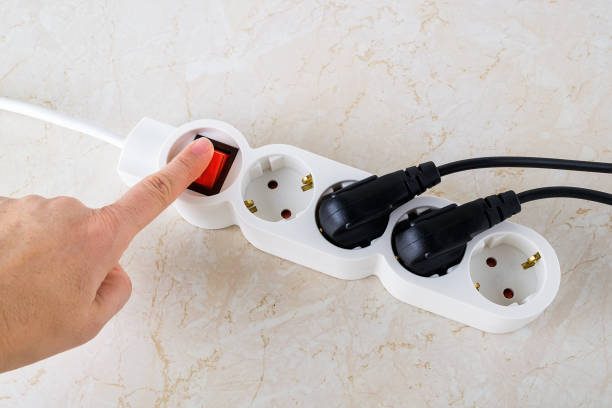
Explore common reasons why LED lights won’t turn on, from faulty wiring and incorrect installations to dead bulbs and power […]

Jump into the clear world of LED lights where bright light meets practicality.
LED lights top the list of lighting types, as they offer multiple benefits, can and help save energy. This not only brightens up rooms but also saves our world.
This post will guide you through the clear world of LED technology where long life, saving money, and being friendly to the environment come together.
Find out why LED lights are better than others.
They don’t just brighten up spaces, they can also shape the future and illuminate the path towards a smarter tomorrow.
LED Brilliance Starts Here, Just $33. Shine Brighter, Save More!
Our Team of Experts Will Guide You Through The ESS Lighting Upgrading Process To Ensure You Achieve The Most Effective Energy Efficient Improvement Possible, GUARANTEED!
A Brighter Home, A Brighter Future!
Incandescent Bulbs: These bulbs transform only 10% of electrical input into visible light; the rest is wasted in the form of heat.
Halogens: Similar to incandescents but slightly more efficient, halogens still squander around 80% of their energy intake as heat.
CFLs: While improved compared to incandescents, CFLs lose approximately two-thirds of their energy as heat.
HIDs: Although powerful, HIDs suffer from significant energy loss due to ballast inefficiencies.
LEDS: Boasting an impressive conversion rate of nearly 100%, LEDs utilize minimal energy yet deliver maximum output.
Also read; How to Make Your Home Energy Efficient?

Incandescents: Typically last between 750-1,000 hours, these bulbs require constant replacement.
Halogens: Despite being more robust than standard incandescents, halogens generally burn out after 2,000-3,000 hours.
CFLs: They last between 8,000-10,000 hours. But they can’t beat LED’s long lifes.
HIDs: Some models might work well for 10,000-24,000 hours.
LEDs: These are the champions. They can operate perfectly for over 50,000 hours. This cuts down costs and avoids repetitive maintenancework.
Also read; Incandescent Vs. CFL Vs. LED – Which Should You Buy?
Incandescents & Halogens: They’re easy to damage. Impacts or shakes can easily ruin them.
CFLs: These types are filled with harmful gases. Improperly handling them during installation or disposal can be dangerous.
HIDs: They get really hot and have complex parts inside them, which makes these types more likely to break down from overheating or part wear.
LEDs: LEDs are made strong. They use solid semiconductors and are sealed inside rock-hard epoxy resins. This makes them great for all sorts of uses.
Incandescents & Halogens: They release plenty of CO2 during their short lives.
CFLs: They produce fewer emissions compared to older bulbs. Still, CFLs contain harmful elements like mercury, so they require special handling and disposal.
HIDs: They give off bright light but use up more energy. This leads to more environmental impact.
LEDs: These bulbs use minimal energy and avoid the harmful chemicals present in other bulbs. LEDs top the chart as the greenest bulbs out there.
Also read; 10 Real Benefits Of LED Lights For Your Home And Business
Incandescents, Halogens, CFLs, & HIDs: None of these will interface well with IoT devices or digital interfaces.
LEDs: Many of these work well with wireless networks. They allow for remote control, automatic programming, and personalized settings when using the proper systems and software.
LED lights can help or hinder plant and animal growth. This varies with the light’s color, intensity, and lifetime. In particular, blue and red LEDs boost plant growth and blossoming, while green and white LEDs slow it down.
Similarly, LED lights can affect the circadian rhythms, behavior, and health of animals, such as birds, insects, fish, and reptiles.
Therefore, it is important to choose the appropriate LED lights for your indoor or outdoor environment, and to avoid excessive or unnecessary lighting that could disturb the natural balance of ecosystems.
LED and solar lights are energy efficient and friendly to the environment, however each has its unique pros and cons.
LEDs produce light using electricity whereas solar lights, use the sunlight to charge their batteries. LEDs offer stable and dependable light while solar lights rely on the strength and availability of sunlight.
LED lights can be used indoors and outdoors, while solar lights are mostly suitable for outdoor use. Finally, while LED lights require wiring and installation, solar lights are easy to set up and move around.
LED lights can either help or harm our health and feelings.
This depends on the light’s color, power, and time of use. Warm, white LED lights can make us feel calm and comfortable, but, cool, white LED lights can wake us up and get us going!
Bright LED light in the morning can make us feel more alert and active and dim LED light at night can help us relax out and sleep well.
It is important to pay attention to the fact that using strong blue or white LED lights at night can mess up our sleep cycle.
This can lead to sleep problems, fatigue, and feeling blue.
It’s easy to see why LED lights beat other types of lights in different categories. If you are looking to save money, have longer-lasting bulbs, decrease your impact on the environment, and use modern technology systems, then LED lights are the answer.
They win in nearly all areas. Picking LED products is the smart choice as tey’re top-quality, dependable, and inventive.
Upgrade Your Halogen Downlights To Energy Efficient LED Downlights Under The NSW Energy Savings Scheme And Slash Your Energy Bills Today! Complete LED Lighting Upgrade From As Little As $33.
Upgrade Your Home for $33 and Up!. Don’t Wait Act Now!